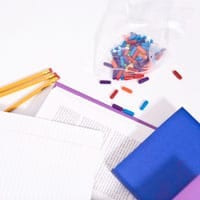Using stimulants to get ahead is not a new idea. Drugs that give you energy, even just caffeine have been used and abused for decades by people who need more energy, who need to stay awake, and who need to focus to get something done. However, we may be facing a new epidemic among young people who feel pressured to succeed. The prescription drugs that help kids suffering with ADHD to focus are being used by teens who want to study more efficiently and longer into the night.
What is ADHD?
ADHD is an abbreviation for attention deficit hyperactivity disorder. Those who suffer from ADHD have trouble focusing on one thing at a time, are easily distracted, are highly impulsive, and are overly active. These behaviors are normal to some extent in children as they develop, but when they fall outside the normal range, a child may be diagnosed with ADHD. The disorder affects between three and five percent of all children and is more common in boys. The causes of ADHD are not known, but it may run in families and it seems to set in early in life. Adults can be affected by the disorder, but some children may grow out of it as they age or may learn to cope without the need for medication.
What are the Drugs Used to Treat ADHD?
There are several prescription medications used to treat the symptoms of ADHD. There is much controversy over the fact that these may be overprescribed and that behavioral therapy is under-utilized. All of the drugs are stimulants, although they actually have a calming effect on children with ADHD. They include amphetamine-dextroamphetamine (Adderall), dexmethylphenidate (Focalin), lisdexamfetamine (Vyvanse), dextroamphetamine (Dextrostat and Dexedrine), and methylphenidate (Concerta, Metadate, Ritalin, and Daytrana). These stimulants affect the brain and its neural pathways. In these pathways, neurotransmitters, or brain chemicals, are used as signalers and messengers. In children with ADHD, some of these pathways and neurotransmitters may not be working correctly. The stimulants correct these deficiencies, specifically by acting on the neurotransmitters dopamine and norepinephrine. The drugs cause them to be released more quickly and reabsorbed more slowly so that they can send their messages and make the brain work correctly.
How are Kids Abusing These Drugs?
Kids without ADHD, especially teens, are using the medications illegally to get ahead in school. They may get the drugs from friends who steal the pills out of the family medicine cabinet or through even through less savory contacts. The appeal in taking these drugs is that they have certain effects that can help a teen succeed academically. The drugs can cause the teen to be unable to sleep, to lose the desire to eat, and to be able to focus on one task with dogged determination. With the pressure to get good grades, to get into good colleges, and to get desirable scores on standardized tests, some teens feel that taking these drugs help them get everything done.
How Big is the Problem?
A story in the New York Times stated that between 15 and 40 percent of students at high-achieving high schools are using and abusing prescription ADHD stimulants. The article suggested that these pills have become a staple in certain crowds of academically competitive students in both high school and college and that their use is on the rise and becoming epidemic. The story may have overestimated the prevalence of this abuse, however. Data from Monitoring the Future, a study that gathers statistics from thousands of people every year and that is part of the National Institute on Drug Abuse, suggests that abuse of prescription drugs among teens is not at an all-time high. For the New York Times article, the researchers contacted only 200 students and parents, of which a mere 20 percent responded. The Monitoring the Future survey, on the other hand, contacts thousands of people and has a response rate closer to 80 percent. The national survey found that prescription drug abuse by teens has actually dropped quite significantly. In 1981, 32 percent of high school seniors reported having abused prescriptions, while in 2011, that statistic had dropped to just 12 percent. The numbers are promising, however, they do not distinguish between types of students and types of schools. What the Times articles suggests is that the prevalence of such abuse in certain high-performing and competitive schools is underreported in national surveys. While that may be true, what is absolutely certain, is that any number of teens abusing these prescriptions is a problem. The potential side effects and the possibility of dependency are dangerous complications in the game of getting ahead.

